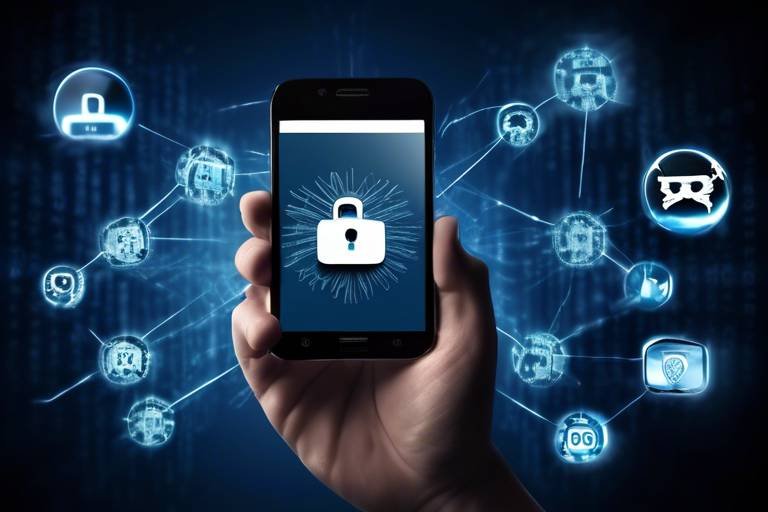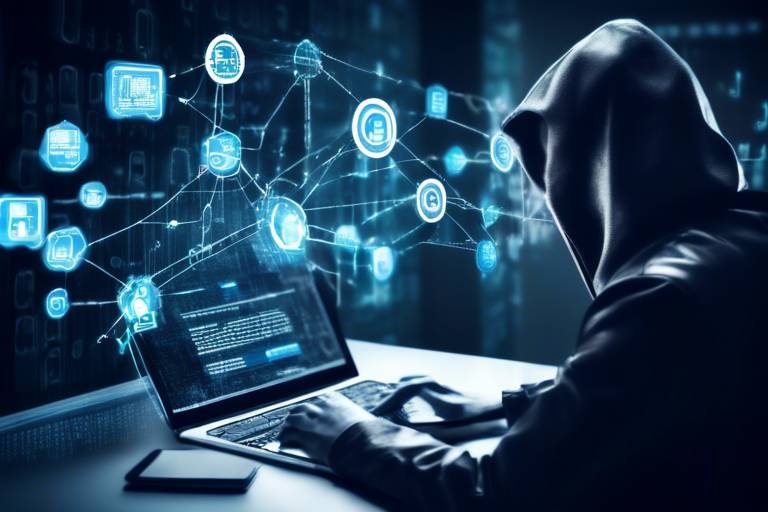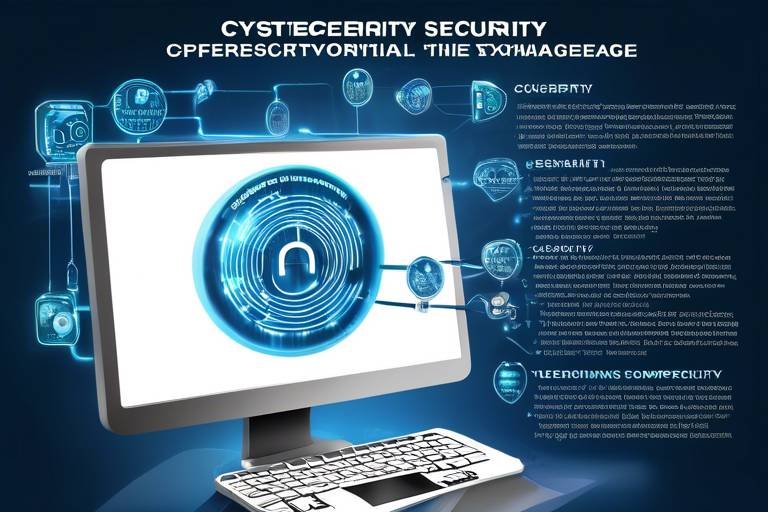The Role of Cybersecurity in the Energy Sector
In our increasingly digital world, the energy sector stands as a vital backbone of modern society. Yet, with great power comes great responsibility—and vulnerability. Cybersecurity is no longer just an IT issue; it’s a national priority that can have profound implications on infrastructure, economy, and safety. Imagine a scenario where a cyberattack disrupts the electricity supply to a major city, causing chaos and panic. This isn’t just a plot from a sci-fi thriller; it’s a looming reality that we must confront. As we dive deeper into this topic, we will explore the critical importance of cybersecurity in the energy sector, the various threats it faces, and the best practices organizations should adopt to safeguard their operations.
Cyber threats targeting the energy sector are as diverse as they are dangerous. From ransomware attacks that can paralyze operations to sophisticated phishing schemes aimed at stealing sensitive data, the potential for disruption is alarming. The energy sector is particularly appealing to cybercriminals due to its critical infrastructure status. A successful attack can not only affect power generation but can also have cascading effects on healthcare, transportation, and communication systems. The implications are staggering. For instance, a cyberattack on a power grid can lead to widespread outages, economic loss, and even safety hazards. It’s crucial to understand these threats to develop effective defenses.
As we navigate the complex landscape of cybersecurity, the energy sector faces unique challenges that complicate its defenses. One of the most significant issues is the prevalence of outdated infrastructure. Many energy companies still operate on legacy systems that were designed long before today’s cyber threats emerged. This creates a perfect storm of vulnerability. Additionally, regulatory compliance adds another layer of complexity. Companies must not only protect their systems but also adhere to various standards and regulations, which can be cumbersome and challenging to implement.
Legacy systems are like old bridges: they may have served their purpose well in the past, but they now pose significant risks. Many energy companies continue to rely on these outdated technologies, making them prime targets for cybercriminals. The lack of modern security features in these systems can lead to severe vulnerabilities. For example, if an energy provider is still using a decades-old control system, it may not have the necessary patches or updates to defend against current cyber threats. This scenario highlights the urgent need for upgrades and modernization within the sector.
The vulnerabilities created by legacy systems can lead to catastrophic security breaches. When these systems are compromised, attackers can gain access to sensitive operational data, control systems, and even customer information. The consequences can be dire, ranging from financial losses to reputational damage. It’s like leaving the front door wide open while knowing there’s a thief in the neighborhood. Organizations need to recognize that ignoring these vulnerabilities is no longer an option.
Fortunately, there are strategies that energy companies can employ to transition from legacy systems to more secure technologies. Here are some effective approaches:
- Conduct a Comprehensive Assessment: Evaluate existing systems to identify vulnerabilities and prioritize upgrades.
- Invest in Modern Technologies: Adopt new technologies that incorporate advanced security features.
- Implement Incremental Changes: Gradually phase out legacy systems to minimize disruption to operations.
By taking these steps, organizations can significantly enhance their cybersecurity posture and better protect themselves against potential threats.
Compliance with cybersecurity regulations is not just a checkbox exercise; it’s a critical component of a robust security strategy. Energy companies must navigate a complex web of regulations, including the North American Electric Reliability Corporation (NERC) standards and the Federal Energy Regulatory Commission (FERC) guidelines. These regulations are designed to ensure that organizations maintain a certain level of cybersecurity preparedness. Failing to comply can result in hefty fines and legal repercussions, further emphasizing the importance of adhering to these standards.
Implementing best practices is vital for strengthening cybersecurity in the energy sector. Organizations should adopt a proactive approach to cybersecurity by integrating it into their overall risk management strategy. This includes regular security assessments, updating software and hardware, and fostering a culture of security awareness among employees. By taking these steps, energy companies can create a robust defense against cyber threats.
One of the most effective defenses against cyber threats is a well-informed workforce. Employee training is crucial in helping staff recognize potential threats and understand safe practices. Regular training sessions can empower employees to act as the first line of defense, spotting phishing attempts or suspicious activity before it escalates. It's like teaching your team to spot a fire before it engulfs the building.
Having a robust incident response plan is essential for mitigating the effects of cyberattacks. This plan should outline clear protocols for identifying, responding to, and recovering from a cyber incident. Key elements of an effective response strategy include:
- Immediate Response Procedures: Steps to take when a breach is detected.
- Communication Plans: Guidelines for informing stakeholders and the public.
- Post-Incident Review: Analyzing the incident to improve future responses.
By preparing for the worst, energy companies can minimize damage and recover more quickly from cyber incidents.
1. What are the most common cyber threats in the energy sector? - Ransomware, phishing, and Distributed Denial of Service (DDoS) attacks. 2. Why are legacy systems a problem for cybersecurity? - They often lack modern security features, making them more vulnerable to attacks. 3. How can organizations improve employee awareness of cybersecurity? - Through regular training sessions and updates on potential threats. 4. What regulations govern cybersecurity in the energy sector? - NERC standards and FERC guidelines are among the key regulations. 5. What should be included in an incident response plan? - Immediate response procedures, communication plans, and post-incident reviews.

Understanding Cyber Threats in Energy
The energy sector is a vital part of our daily lives, powering everything from our homes to our industries. However, with the increasing reliance on digital technologies, this sector has become a lucrative target for cybercriminals. Cyber threats in the energy industry are not just nuisances; they can disrupt operations, compromise safety, and even endanger national security. Imagine a scenario where a cyberattack leads to a blackout in a major city, affecting hospitals, transportation systems, and daily life. This is not just a possibility; it is a reality that energy companies must prepare for.
There are several types of cyberattacks that are particularly prevalent in the energy sector. These include:
- Ransomware Attacks: Cybercriminals encrypt critical data and demand a ransom for its release, potentially crippling operations.
- Phishing Scams: Attackers trick employees into revealing sensitive information, which can lead to unauthorized access to systems.
- DDoS Attacks: Distributed Denial of Service attacks overwhelm systems with traffic, causing outages and operational delays.
- Data Breaches: Sensitive information, such as customer data and proprietary technology, is stolen and used for malicious purposes.
The impacts of these threats can be devastating. A successful cyberattack can lead to significant financial losses, regulatory penalties, and damage to reputation. Furthermore, the consequences can extend beyond the company itself, affecting customers and the broader community. For instance, a ransomware attack on a power grid could lead to widespread outages, disrupting businesses and emergency services, and potentially risking lives.
As we delve deeper into the complexities of cybersecurity in the energy sector, it becomes clear that understanding these threats is the first step in building a robust defense. Organizations must stay informed about the evolving landscape of cyber threats and implement proactive measures to safeguard their systems. This involves not only investing in advanced technologies but also fostering a culture of security awareness among employees. After all, the most sophisticated security measures can fail if the human element is not adequately trained to recognize and respond to cyber threats.

Key Cybersecurity Challenges
The energy sector is a vital part of our daily lives, powering everything from our homes to industries. However, it faces a myriad of cybersecurity challenges that can put this essential service at risk. One of the most pressing issues is the reliance on outdated infrastructure. Many energy companies still operate using legacy systems that were designed decades ago, making them less adaptable to modern security threats. These systems often lack the necessary updates and patches that are crucial for defending against cyberattacks, leaving them vulnerable to exploitation.
Moreover, the energy sector is subject to a complex web of regulatory compliance requirements. Companies must navigate numerous standards set by government bodies and industry organizations, which can vary significantly from one region to another. This compliance burden can divert resources away from proactive cybersecurity measures, leaving organizations exposed. For instance, failure to comply with regulations can lead to hefty fines, but more importantly, it can compromise the safety of critical infrastructure.
Another significant challenge is the increasing sophistication of cyber threats. Cybercriminals are constantly evolving their tactics, employing advanced techniques such as ransomware, phishing, and distributed denial-of-service (DDoS) attacks. These threats can disrupt operations, steal sensitive data, and even endanger lives by impacting safety systems. In fact, a successful cyberattack on an energy facility can have cascading effects, not just on the organization itself but also on the wider community that relies on its services.
To illustrate the challenges faced, consider the following table that highlights some of the key cybersecurity issues in the energy sector:
| Challenge | Description |
|---|---|
| Outdated Infrastructure | Legacy systems that cannot adapt to modern security threats. |
| Regulatory Compliance | Complex regulations that can hinder proactive security measures. |
| Advanced Cyber Threats | Constantly evolving tactics used by cybercriminals. |
| Insufficient Funding | Limited budgets for cybersecurity initiatives. |
Finally, it's important to acknowledge the insufficient funding that many organizations face when it comes to cybersecurity. With tight budgets and competing priorities, energy companies often struggle to allocate enough resources to strengthen their defenses. This can lead to a reactive rather than proactive approach to cybersecurity, which is a dangerous position in an age where cyber threats are more prevalent than ever.
In summary, the energy sector's cybersecurity challenges are multifaceted and require a comprehensive approach to address effectively. By recognizing these issues, organizations can begin to implement strategies that not only protect their systems but also ensure the safety and reliability of the energy supply that we all depend on.
- What are the main cybersecurity threats to the energy sector? The main threats include ransomware, phishing attacks, and DDoS attacks.
- How can outdated infrastructure affect cybersecurity? Legacy systems often lack modern security updates, making them vulnerable to exploitation.
- Why is regulatory compliance important? Compliance helps ensure that organizations adhere to necessary security standards, reducing the risk of breaches.
- What can energy companies do to improve cybersecurity? Companies should invest in modern technologies, employee training, and incident response planning.

Legacy Systems Vulnerabilities
The energy sector is often seen as a bastion of reliability and stability, but lurking beneath the surface are the vulnerabilities of legacy systems. These outdated technologies, while once state-of-the-art, now pose significant risks to cybersecurity. Many energy companies continue to rely on these systems, which were designed in an era when connectivity and cyber threats were not as prevalent. This reliance can be likened to driving an old car on a modern highway; while it may still function, it lacks the safety features and performance capabilities required to navigate today’s fast-paced environment.
One of the primary issues with legacy systems is their inherent incompatibility with modern security protocols. As cyber threats evolve, so too must the defenses that protect against them. However, legacy systems often lack the necessary updates to defend against these new types of attacks. For example, systems that were not designed to handle the complexities of today’s cyber threat landscape can become easy targets for hackers. This vulnerability can lead to severe consequences, including data breaches, operational disruptions, and compromised safety protocols.
Moreover, the integration of legacy systems into current infrastructures can create a tangled web of vulnerabilities. When these older systems are connected to newer technologies, they can act as gateways for cybercriminals. Imagine a castle with a crumbling wall; while the main structure may be fortified, a weak point can easily be exploited. This analogy holds true for energy companies that have not prioritized the security of their legacy systems.
To illustrate the impact of these vulnerabilities, consider the following table, which outlines the most common risks associated with legacy systems in the energy sector:
| Risk | Description |
|---|---|
| Increased Attack Surface | Legacy systems often have numerous entry points that can be exploited by cybercriminals. |
| Lack of Support | Many legacy systems are no longer supported by vendors, leaving them without crucial updates and patches. |
| Compliance Issues | Outdated systems may not meet current regulatory standards, leading to potential fines or legal issues. |
| Operational Inefficiencies | Legacy systems can slow down operations, making it difficult to respond quickly to incidents. |
Addressing these vulnerabilities is not merely a matter of upgrading technology; it requires a comprehensive strategy that includes risk assessment, employee training, and incident response planning. Energy companies must recognize that clinging to outdated systems can have dire consequences. It's essential to develop a roadmap for transitioning to modern, secure technologies that can withstand the pressures of today’s cyber landscape. This isn't just about technology; it's about the very foundation of national security and the safety of our energy supply.
In conclusion, the vulnerabilities associated with legacy systems in the energy sector are a ticking time bomb. As cyber threats become more sophisticated, organizations must prioritize the upgrade of these systems to protect their infrastructure and ensure operational continuity. Ignoring these risks is no longer an option; the time for action is now.
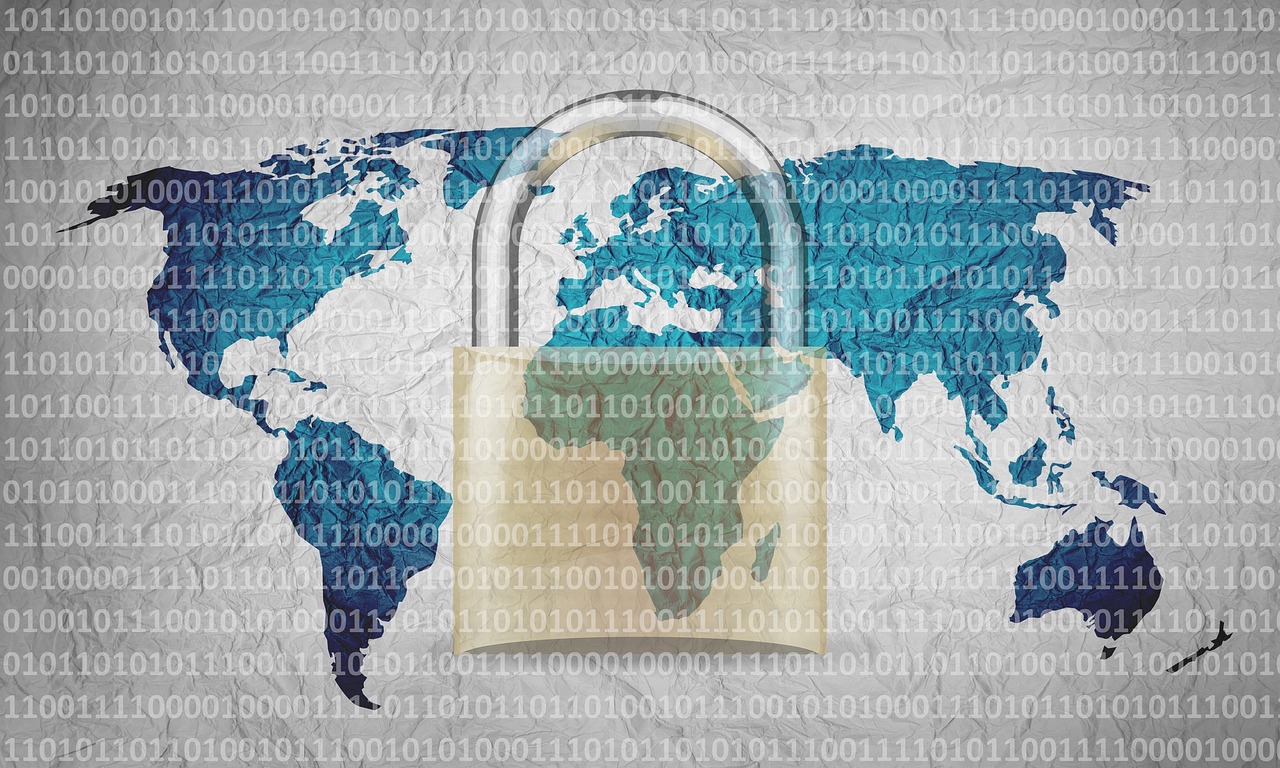
Impact of Legacy Systems on Security
The impact of legacy systems on security in the energy sector cannot be overstated. These outdated technologies, often designed in a time when cybersecurity was not a pressing concern, are like old locks on modern doors—they might still work, but they provide little protection against today's sophisticated threats. When we think about the vulnerabilities posed by legacy systems, we must consider several critical factors that make them prime targets for cybercriminals.
First and foremost, many legacy systems lack the necessary security updates and patches that newer systems receive regularly. This absence of updates creates a significant gap in defense, allowing attackers to exploit known vulnerabilities. For instance, an attacker could easily breach an old control system that has not been updated in years, gaining access to sensitive operational data or even shutting down critical infrastructure.
Moreover, legacy systems often operate on outdated protocols and software that may not comply with current cybersecurity standards. This non-compliance can lead to a cascade of issues, including:
- Increased Risk of Breaches: Without modern encryption and security features, data transmitted through these systems is vulnerable to interception.
- Limited Visibility: Organizations may struggle to monitor and detect suspicious activities within legacy systems, making it difficult to respond to threats in real-time.
- Integration Challenges: Legacy systems may not integrate well with newer technologies, leading to gaps in security coverage and complicating incident response efforts.
As a result, the consequences of relying on legacy systems can be dire. A successful cyberattack on these systems can lead to not only financial losses but also jeopardize public safety and national security. For example, a breach that disrupts power distribution could result in widespread outages, affecting hospitals, emergency services, and critical infrastructure. The ripple effects of such incidents can be catastrophic, highlighting the urgent need for energy companies to address these vulnerabilities.
In conclusion, the impact of legacy systems on security is profound and multifaceted. As cyber threats continue to evolve, energy companies must prioritize the upgrade of these outdated systems to safeguard their operations and protect against potential disasters. Investing in modern technologies and security practices is not just a matter of compliance; it is essential for ensuring the resilience and reliability of our energy infrastructure.

Strategies for Upgrading Systems
Upgrading legacy systems in the energy sector is not just a technical necessity; it’s a strategic imperative. As cyber threats evolve, so too must the defenses that protect our critical infrastructure. The first step in this journey is to conduct a comprehensive assessment of existing systems. This involves identifying vulnerabilities and understanding how these outdated technologies can be exploited by cybercriminals. By evaluating the current landscape, organizations can prioritize which systems need immediate attention and which can be phased out gradually.
One effective strategy for upgrading systems is to implement a phased approach. Rather than attempting a complete overhaul in one fell swoop, energy companies can break the process into manageable stages. This method not only reduces operational disruptions but also allows for continuous monitoring and adjustment. For instance, during the first phase, organizations might focus on upgrading the most critical systems that directly impact safety and operational integrity. Subsequent phases can then address less critical systems, ensuring that the entire infrastructure is eventually fortified against cyber threats.
Moreover, integrating modern technologies such as cloud computing and artificial intelligence can significantly enhance security measures. These technologies offer advanced capabilities for threat detection and response, making it easier for organizations to identify and neutralize potential attacks before they escalate. For example, cloud solutions can provide scalable resources that adapt to the evolving threat landscape, while AI can analyze vast amounts of data to identify unusual patterns indicative of a cyber threat.
Collaboration with industry partners is another essential strategy. By sharing knowledge and resources, energy companies can develop more robust defense mechanisms. This collaboration can take the form of joint cybersecurity exercises or information-sharing platforms that keep organizations informed about the latest threats and best practices. By working together, companies can create a united front against cyber adversaries, making it harder for them to penetrate defenses.
Finally, it’s crucial to ensure that all upgrades comply with relevant regulations and standards. Keeping abreast of these requirements not only helps avoid penalties but also enhances the overall security posture of the organization. Regular audits and assessments can ensure that upgraded systems meet compliance standards while also identifying any new vulnerabilities that may arise.
In conclusion, upgrading systems in the energy sector is a multifaceted endeavor that requires careful planning, collaboration, and adherence to regulatory standards. By adopting a phased approach, leveraging modern technologies, and fostering partnerships, organizations can significantly enhance their cybersecurity defenses and protect critical infrastructure from emerging threats.
- What are legacy systems? Legacy systems refer to outdated computer systems or applications that are still in use, often due to their critical role in operations.
- Why is upgrading systems important for cybersecurity? Upgrading systems is crucial because outdated technology often contains vulnerabilities that can be exploited by cybercriminals, putting sensitive data and operations at risk.
- How can organizations assess their current systems? Organizations can conduct a thorough audit of their systems, focusing on identifying vulnerabilities, compliance with regulations, and overall performance.
- What role does employee training play in cybersecurity? Employee training is vital as it educates staff about potential threats and safe practices, reducing the risk of human error leading to security breaches.
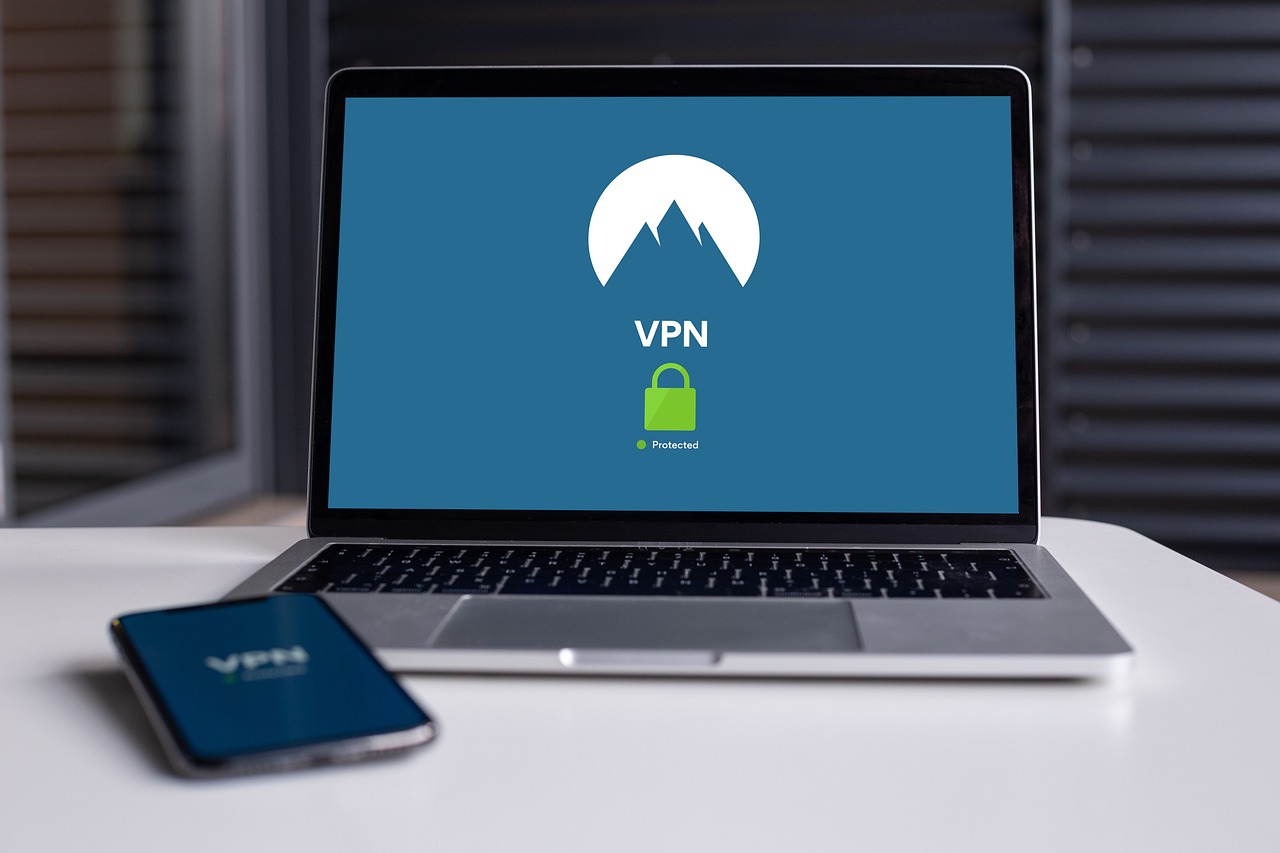
Regulatory Compliance and Standards
In the ever-evolving landscape of cybersecurity, regulatory compliance serves as a crucial pillar for energy companies aiming to safeguard their operations. With the increasing frequency and sophistication of cyber threats, adhering to established standards is not just a legal obligation; it’s a matter of national security and public safety. Various regulatory bodies have put forth guidelines that energy organizations must follow to ensure they are adequately protected against cyberattacks. These regulations are designed to create a baseline of security measures that help mitigate risks associated with vulnerabilities in the energy sector.
One of the most significant frameworks impacting the energy sector is the NIST Cybersecurity Framework. This framework provides a policy framework of computer security guidance for how private sector organizations in the U.S. can assess and improve their ability to prevent, detect, and respond to cyber attacks. Energy companies must not only understand these frameworks but also implement them effectively within their operations. Compliance with such regulations often involves a comprehensive understanding of the various cybersecurity standards that govern practices in this sector.
To illustrate the importance of regulatory compliance, consider the following table that outlines some key regulations affecting the energy sector:
| Regulation | Description | Implications for Compliance |
|---|---|---|
| NERC CIP | North American Electric Reliability Corporation Critical Infrastructure Protection standards focus on securing the assets required for operating North America's bulk electric system. | Mandatory compliance for utility companies; failure to comply can result in significant fines. |
| FERC | Federal Energy Regulatory Commission oversees the transmission of electricity, natural gas, and oil, ensuring reliable energy supply. | Compliance ensures operational reliability and reduces risk of cyber incidents. |
| ISO/IEC 27001 | International standard for information security management systems (ISMS), applicable across various industries, including energy. | Establishes a systematic approach to managing sensitive company information. |
Compliance with these regulations not only protects the organization but also builds trust with consumers and stakeholders. It reinforces the idea that energy companies are serious about their cybersecurity responsibilities. However, achieving compliance is not without its challenges. Organizations often struggle with the complexity of these regulations and the resources required to meet them. This is where a strategic approach can make a significant difference.
To navigate the maze of regulatory requirements effectively, energy companies should consider the following best practices:
- Regular Audits: Conducting regular audits can help identify gaps in compliance and areas needing improvement.
- Collaboration: Working with cybersecurity experts can provide insights into best practices and emerging threats.
- Documentation: Keeping thorough documentation of compliance efforts can aid in demonstrating adherence to regulations during audits.
In conclusion, regulatory compliance and standards are not just bureaucratic hurdles; they are essential components of a robust cybersecurity strategy in the energy sector. By understanding and implementing these regulations effectively, energy companies can significantly enhance their defenses against cyber threats, ultimately ensuring safer and more reliable energy delivery to consumers.

Best Practices for Cybersecurity
In today's digital landscape, the energy sector is more vulnerable than ever to cyber threats. As we dive into the , it's essential to recognize that these practices are not just a checklist but a continuous journey towards fortifying your defenses. Organizations must adopt a proactive approach to stay ahead of cybercriminals who are constantly evolving their tactics. So, what are some of the most effective strategies to enhance cybersecurity in the energy sector?
First and foremost, employee training and awareness stands out as a critical component. Imagine your employees as the first line of defense; if they are untrained, it's like leaving the door wide open for intruders. Regular training sessions can help staff identify phishing attempts, social engineering tactics, and other common threats. A well-informed employee is less likely to fall victim to a cyberattack, ultimately protecting the organization from potential breaches.
Moreover, having a robust incident response plan is vital. This plan should outline clear steps to take in the event of a cyber incident, ensuring that everyone knows their role and responsibilities. Consider this plan as your cybersecurity playbook—without it, you’re left scrambling in a crisis. Key elements to include are:
- Identification of critical assets and data
- Clear communication protocols
- Designated incident response team
- Regular testing and updates of the plan
Another essential practice is the implementation of multi-factor authentication (MFA). By requiring multiple forms of verification before granting access to systems, organizations can significantly reduce the risk of unauthorized access. Think of it as adding extra locks to your front door; the more barriers you have, the harder it is for intruders to get in.
Finally, organizations should prioritize regular software updates and patch management. Cybercriminals often exploit vulnerabilities in outdated software, making it crucial to keep all systems up to date. Establishing a routine for checking and applying updates can help close security gaps that could be exploited. It's like maintaining your car; regular check-ups can prevent breakdowns and costly repairs down the line.
In conclusion, the energy sector must embrace these best practices to create a robust cybersecurity framework. By investing in employee training, developing an incident response plan, implementing multi-factor authentication, and ensuring regular software updates, organizations can significantly enhance their security posture. The stakes are high, and the cost of inaction can be devastating. Protecting our energy infrastructure is not just a responsibility; it's a necessity.
Q1: What are the most common cyber threats faced by the energy sector?
A1: The energy sector often faces threats such as ransomware attacks, phishing schemes, and insider threats. These can disrupt operations and compromise sensitive data.
Q2: How can employee training improve cybersecurity?
A2: By educating employees about potential threats and safe practices, organizations can reduce the likelihood of human error, which is a significant factor in many cyber incidents.
Q3: What should be included in an incident response plan?
A3: An effective incident response plan should include identification of critical assets, clear communication protocols, a designated response team, and regular testing and updates.
Q4: Why is multi-factor authentication important?
A4: Multi-factor authentication adds an extra layer of security by requiring users to provide multiple forms of verification, making it more difficult for unauthorized users to gain access.
Q5: How often should software updates be performed?
A5: Organizations should establish a routine for checking and applying updates regularly, ideally at least once a month, to ensure that all systems are protected against known vulnerabilities.

Employee Training and Awareness
In the ever-evolving landscape of cybersecurity, has emerged as a cornerstone of an effective defense strategy, especially in the energy sector. It's not just about having the latest technology; it's about ensuring that every individual within an organization understands their role in safeguarding sensitive information and critical infrastructure. Think of it this way: a company is only as strong as its weakest link. If employees are unaware of potential threats, they become the prime targets for cybercriminals.
Training programs should not be a one-time event but rather an ongoing effort to keep staff informed about the latest threats and best practices. Regular workshops, online courses, and interactive sessions can significantly enhance employees' understanding of cybersecurity. For instance, a simple phishing simulation can illustrate how easily a seemingly innocuous email can lead to a security breach. By engaging employees in these scenarios, organizations can foster a culture of vigilance and proactive behavior.
Moreover, it's crucial to tailor training programs to fit different roles within the organization. For example, while IT staff may need in-depth technical training, other employees might benefit more from general awareness sessions that cover topics such as:
- Recognizing phishing attempts
- Understanding the importance of strong passwords
- Knowing how to report suspicious activities
Additionally, incorporating real-world case studies into training can make the information more relatable and memorable. Discussing actual incidents that have occurred within the energy sector can highlight the consequences of negligence and reinforce the importance of vigilance. Employees will be more likely to remember the lessons learned when they can connect them to real-life scenarios.
Finally, organizations should not overlook the importance of creating an environment where employees feel comfortable reporting potential security issues. A robust reporting mechanism encourages staff to speak up without fear of reprimand. This open communication can be the difference between a minor incident and a full-blown security breach. By fostering a culture of transparency and accountability, energy companies can significantly enhance their overall cybersecurity posture.
Q1: Why is employee training important for cybersecurity?
A1: Employee training is essential because it empowers staff to recognize and respond to potential threats, thereby reducing the likelihood of human error leading to security breaches.
Q2: How often should training be conducted?
A2: Training should be conducted regularly, ideally at least once a year, with additional sessions scheduled as new threats emerge or when significant changes in technology occur.
Q3: What topics should be covered in training sessions?
A3: Training sessions should cover topics such as phishing awareness, password security, safe browsing practices, and incident reporting procedures.
Q4: How can organizations measure the effectiveness of their training programs?
A4: Organizations can measure effectiveness through assessments, feedback surveys, and monitoring the number of reported incidents before and after training sessions.

Incident Response Planning
In the ever-evolving landscape of cybersecurity, having a robust incident response plan is not just a good idea—it's a necessity. Think of it as a fire drill for your digital infrastructure. Just like you wouldn't wait for a fire to break out to figure out how to escape a building, energy companies shouldn't wait for a cyberattack to develop a strategy. An effective incident response plan helps organizations identify, manage, and mitigate the effects of cyber threats efficiently. It lays out a roadmap, ensuring that every team member knows their role when the alarm bells start ringing.
The first step in crafting an incident response plan is to establish a clear incident response team (IRT). This team should consist of individuals from various departments, including IT, legal, compliance, and even communications. By bringing together diverse expertise, you ensure a well-rounded approach to tackling incidents. Each team member should have defined roles and responsibilities, which will help streamline the response process when an incident occurs.
Next, organizations must conduct a thorough risk assessment to identify potential vulnerabilities that could be exploited by cybercriminals. This assessment should include both technical vulnerabilities—like outdated software—and human factors, such as employee negligence or lack of awareness. By understanding where the weaknesses lie, energy companies can prioritize their response efforts and allocate resources more effectively.
Once the team is in place and vulnerabilities are identified, the plan should outline key elements of the response process. Here are some critical components to consider:
- Detection and Analysis: Quickly identifying the nature of the incident is vital. This can be achieved through continuous monitoring and utilizing advanced threat detection tools.
- Containment: Once an incident is confirmed, the immediate goal is to contain the threat to prevent further damage. This may involve isolating affected systems or networks.
- Eradication: After containment, the next step is to eliminate the root cause of the incident. This could involve removing malware or closing vulnerabilities that were exploited.
- Recovery: Once the threat is eradicated, systems can be restored to normal operations. It's crucial to monitor systems closely during this phase to ensure no residual threats remain.
- Post-Incident Review: After the dust settles, conducting a thorough review of the incident is essential. This helps identify what worked well and what didn’t, providing valuable insights for future preparedness.
Moreover, regular training and simulations are essential for keeping the incident response team sharp. Just like athletes practice their plays, cybersecurity teams should conduct mock drills to prepare for various scenarios. These exercises help build confidence and ensure that everyone knows their role in a crisis.
Finally, it’s crucial to maintain open lines of communication throughout the incident response process. Stakeholders, including employees, customers, and regulatory bodies, should be kept informed to manage expectations and maintain trust. A transparent approach can make all the difference in how an organization is perceived during and after an incident.
In conclusion, an effective incident response plan is a vital component of any cybersecurity strategy for the energy sector. By preparing for the worst, organizations can minimize damage, protect sensitive data, and maintain their operational integrity. Remember, in the world of cybersecurity, it’s not a matter of if an incident will happen, but when. Being prepared is your best defense.
Q1: What is an incident response plan?
An incident response plan is a documented strategy outlining how an organization will respond to a cyber incident. It includes roles, responsibilities, and procedures to follow during an incident.
Q2: Why is an incident response plan important?
Having a plan in place helps organizations quickly and effectively respond to cyber threats, minimizing damage and ensuring a swift recovery.
Q3: How often should an incident response plan be updated?
It's recommended to review and update your incident response plan at least annually or after any significant incident to ensure it remains effective and relevant.
Q4: Who should be involved in the incident response team?
The incident response team should include members from various departments, such as IT, legal, compliance, and communications, to ensure a comprehensive approach to incident management.
Frequently Asked Questions
- What are the main cyber threats facing the energy sector?
The energy sector is under constant threat from various cyberattacks, including ransomware, phishing, and Distributed Denial of Service (DDoS) attacks. These threats can disrupt operations, compromise safety, and even lead to significant financial losses. It's crucial for organizations in this field to stay vigilant and implement robust cybersecurity measures.
- Why are legacy systems a problem for cybersecurity in energy companies?
Legacy systems often lack the necessary updates and security features to defend against modern cyber threats. They can be more vulnerable to attacks, making them attractive targets for cybercriminals. Upgrading these systems is essential to enhance security and protect sensitive infrastructure.
- How can energy companies ensure regulatory compliance in cybersecurity?
Energy companies can ensure compliance by staying informed about the latest regulations and standards that govern cybersecurity within the sector. Regular audits, risk assessments, and employee training can help organizations meet these requirements and protect their systems from potential breaches.
- What best practices should energy companies adopt for cybersecurity?
Some best practices include implementing strong password policies, conducting regular security training for employees, and developing a comprehensive incident response plan. By fostering a culture of security awareness and preparedness, organizations can significantly reduce their risk of cyber incidents.
- How important is employee training in preventing cyber threats?
Employee training is absolutely critical! Most cyberattacks exploit human error, so educating staff about potential threats and safe practices can drastically minimize risks. Regular training sessions help keep security top-of-mind and empower employees to act as the first line of defense.
- What should an incident response plan include?
An effective incident response plan should outline clear procedures for identifying, responding to, and recovering from cyber incidents. Key elements include roles and responsibilities, communication protocols, and post-incident analysis to improve future responses. This preparedness can significantly reduce the impact of a cyberattack.






